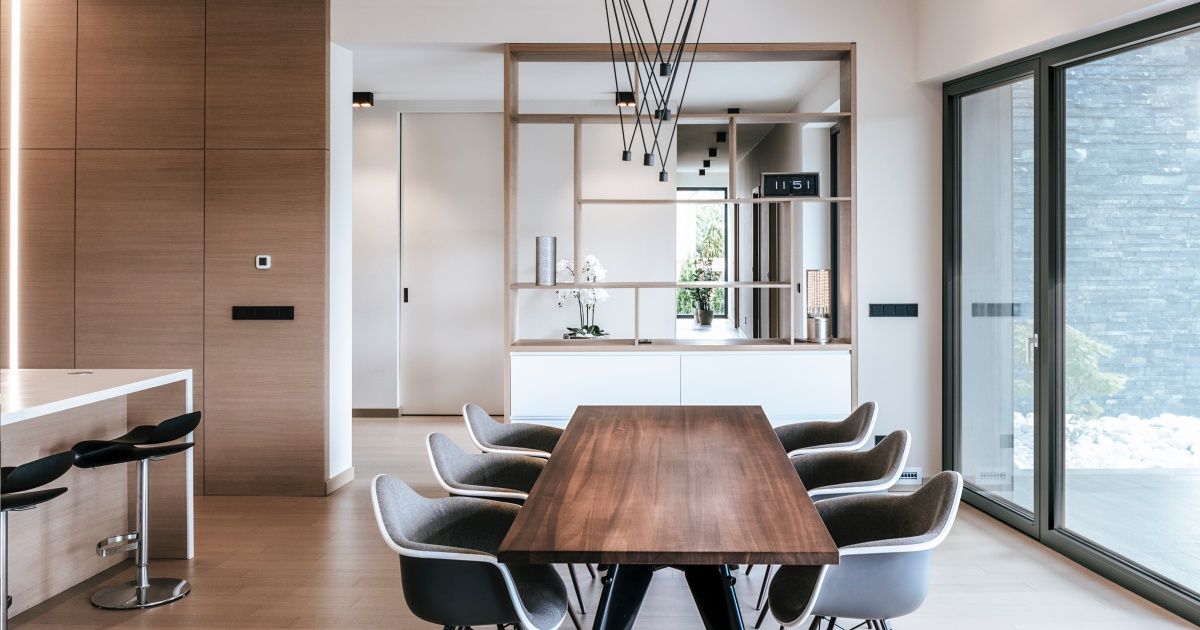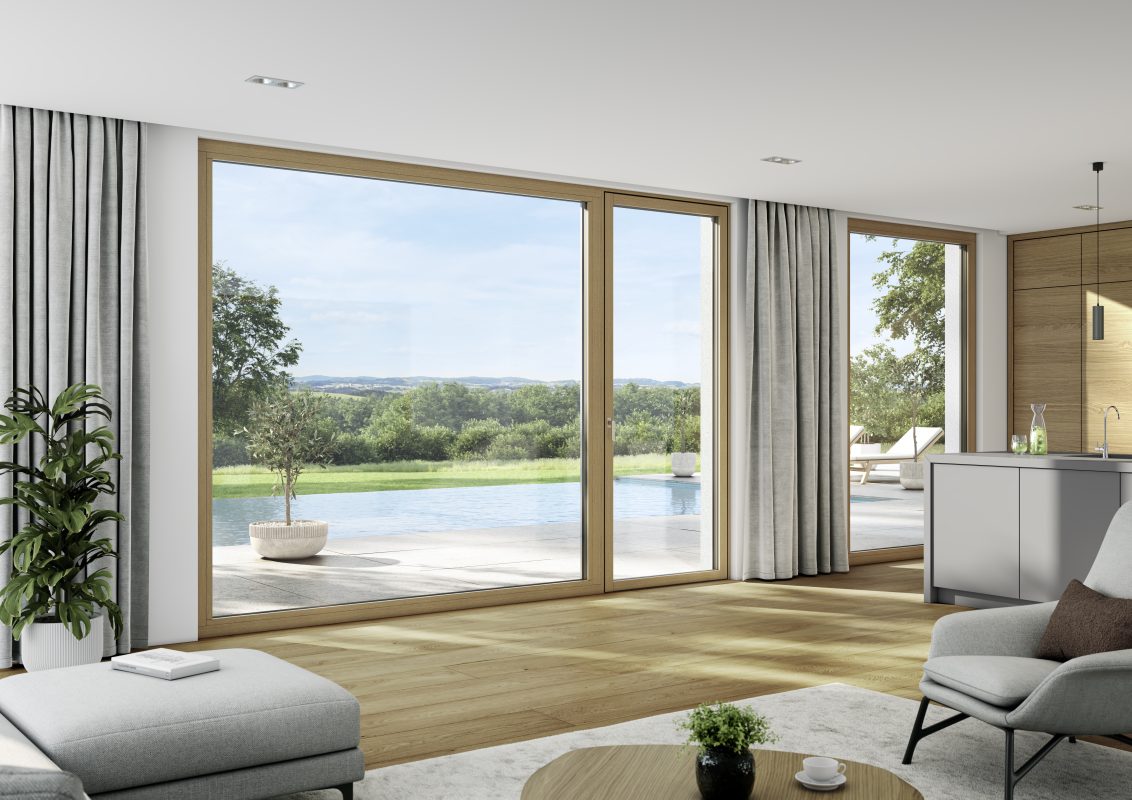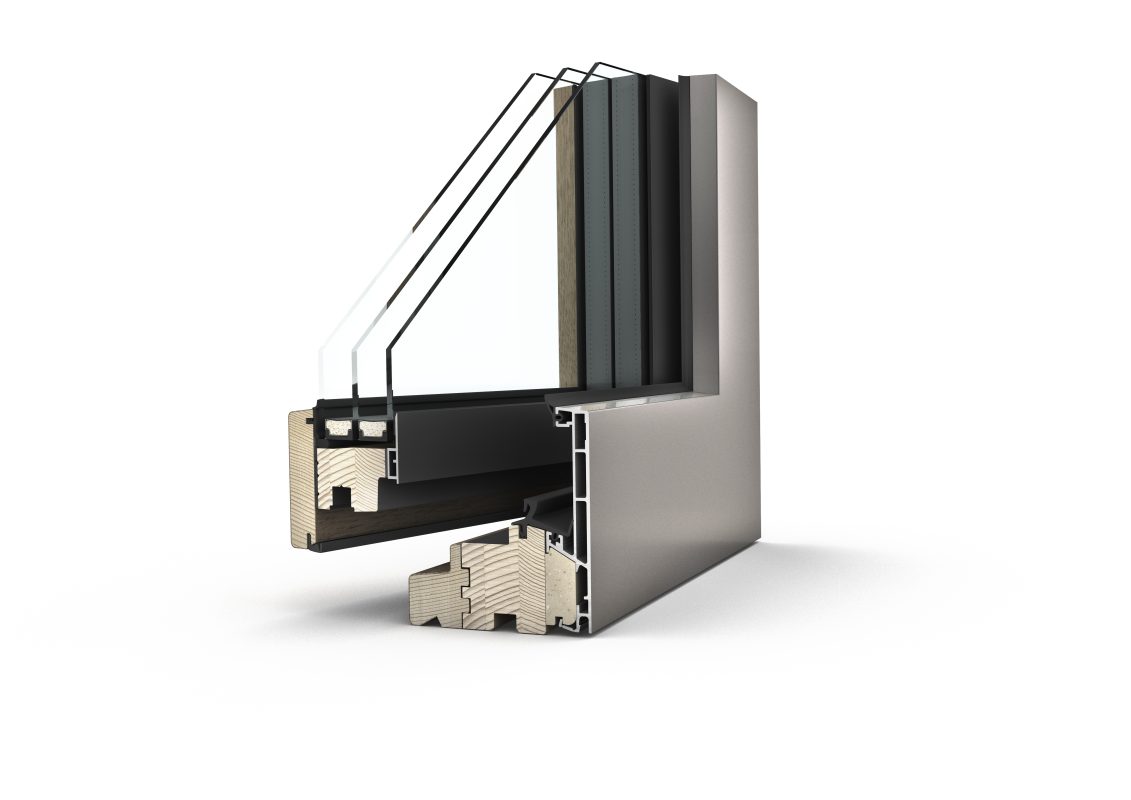When planning a self-build, Passivhaus, a major renovation, or even updating a family home, the choice of windows is one of the most important architectural decisions you’ll make. Windows do far more than frame a view – they define the character of your home, influence comfort and energy efficiency, and create the connection between indoors and outdoors that modern living demands.
What Are the Best Windows for Modern Architecture?
Contemporary design favours slim frame windows and sashless windows, which maximise natural light and create elegant, uninterrupted sightlines. Unlike bulky, older uPVC frames, today’s designer windows are engineered to balance sleek aesthetics with advanced performance.
Two outstanding examples from Internorm include:
- KF 520 uPVC-Aluminium Window – slim, sashless, and ultra-modern with triple glazing and integrated security features.
- HF 520 Timber-Aluminium Window – combining natural timber inside with durable aluminium outside for a timeless, warm yet modern look.
These windows are particularly suited to self-builds, renovations, and Passivhaus projects, where performance and design must go hand-in-hand.

Are Slim Frame Windows Energy Efficient?
Of course, not all windows are the same, and U-values vary dramatically. However, a common misconception is that slim frames might compromise insulation. In fact, triple glazed windows with advanced composite materials can outperform traditional designs, in particular pure aluminium windows. Internorm’s KF 520 and HF 520 deliver exceptional thermal insulation, acoustic comfort, and security, while their slender profiles maximise glass area and daylight.
Timber Aluminium vs uPVC Aluminium – Which Is Better?
For many, the choice comes down to personal preference:
- Timber-Aluminium: a natural, warm interior aesthetic with the reassurance of a low-maintenance aluminium exterior.
- uPVC-Aluminium: cost-effective, durable, and perfectly suited to sleek, minimalist designs.
Both triple-glazed, alu-clad options are long-lasting, highly energy efficient, and designed to remain low maintenance for 30+ years, making them ideal for homeowners seeking peace of mind. Plus, you can combine both HF 520 timber-aluminium and KF 520 uPVC-aluminium windows in one project. If you prefer beautiful natural timber on the inside for your main living areas, you can opt for internal uPVC for your bathrooms, utility room, and any room that is not used as much. All without loosing the uniform look of the external aluminium cladding.
Are Modern Designer Windows Worth the Investment?
For those planning a self-build or upgrading a cherished family home, the answer is yes. Choosing premium window systems is not just about today – it’s about creating a comfortable, efficient, and stylish living space for decades to come.
Why Windows Matter in Modern Architecture
- Design freedom: Slim profiles and sashless designs create expansive glass surfaces, allowing architects and homeowners to maximise light without compromising strength or performance.
- Performance meets aesthetics: In modern homes, windows must balance style with energy efficiency, sound insulation, and security.
- Connection to nature: Large glazed areas blur the boundary between indoors and outdoors, making the home feel open, inviting, and in harmony with its surroundings.

The Benefits of Modern Designer Composite Windows
1. Slim Frames, More Glass
One of the strongest trends in contemporary design is the move towards minimal sightlines. The Internorm KF 520 uPVC-aluminium window delivers a sashless appearance, creating a pure glass aesthetic from the outside while offering triple glazing performance from the inside.
2. Warmth of Timber, Strength of Aluminium
For those who want natural materials with low maintenance durability, the triple-glazed HF 520 timber-aluminium window combines the warmth of solid timber inside with the weather-resistant aluminium cladding outside. This fusion gives modern homes both elegance and longevity. Choose from different shades of beautiful oak, spruce, larch and walnut, or factory painted in any colour, this stylish alu-clad timber window will enhance any interior design.
3. Energy Efficiency Built In
With building regulations tightening under Part L of the Future Homes Standard, high-performance windows are no longer optional. Internorm triple glazing with U-values as low as 0.62 W/(m²K) ensures a warm, efficient home with reduced heating bills – now and for decades to come.
4. Enhanced Security
Designer windows don’t just look good; they protect what matters most. The I-tec Secure system, fully integrated into Internorm’s sashless KF 520, locks flaps directly into the frame, making forced entry virtually impossible while keeping design lines uninterrupted.
5. Acoustics for Modern Living
Noise pollution is one of the most common concerns in urban and suburban areas. Premium triple glazing reduces external noise significantly, creating calm, quiet interiors – a benefit especially valued by homeowners who are seeking long-term comfort.
The benefit of Internorm’s 520 range is that you can mix and match the HF 520 timber-aluminium window with the KF 520 uPVC-aluminium window in one house. So choose from timber or uPVC options on the inside, and the same aluminium cladding on the outside.

FAQs About Modern Windows
Q: Are slim-frame designer windows energy efficient?
Yes. Internorm’s KF 520 and HF 520 combine ultra-slim aesthetics with market-leading insulation values.
Q: What’s the lifespan of timber-aluminium windows?
With proper installation and minimal maintenance, Internorm windows can last 30+ years.
Q: Do designer windows increase home value?
Yes. High-specification windows not only elevate design but also improve efficiency (EPC rating), security, and long-term property value.
Q: Can modern windows reduce noise?
Absolutely. Triple glazing can reduce outside noise by up to 47 dB, transforming the atmosphere indoors and providing a good night’s sleep.
Q: What windows are recommended for modern house design?
Slim frame, sashless, and triple glazed windows, such as Internorm’s KF 520 and HF 520, are perfect for contemporary builds.
Q: Are designer windows suitable for Passivhaus projects?
Absolutely Internorm’s systems meet stringent energy efficiency requirements, making them ideal for sustainable homes.
Why not visit your local Internorm showroom and find out what makes Internorm triple-glazed composite windows different. To find your nearest distribution partner, please visit our homepage.
